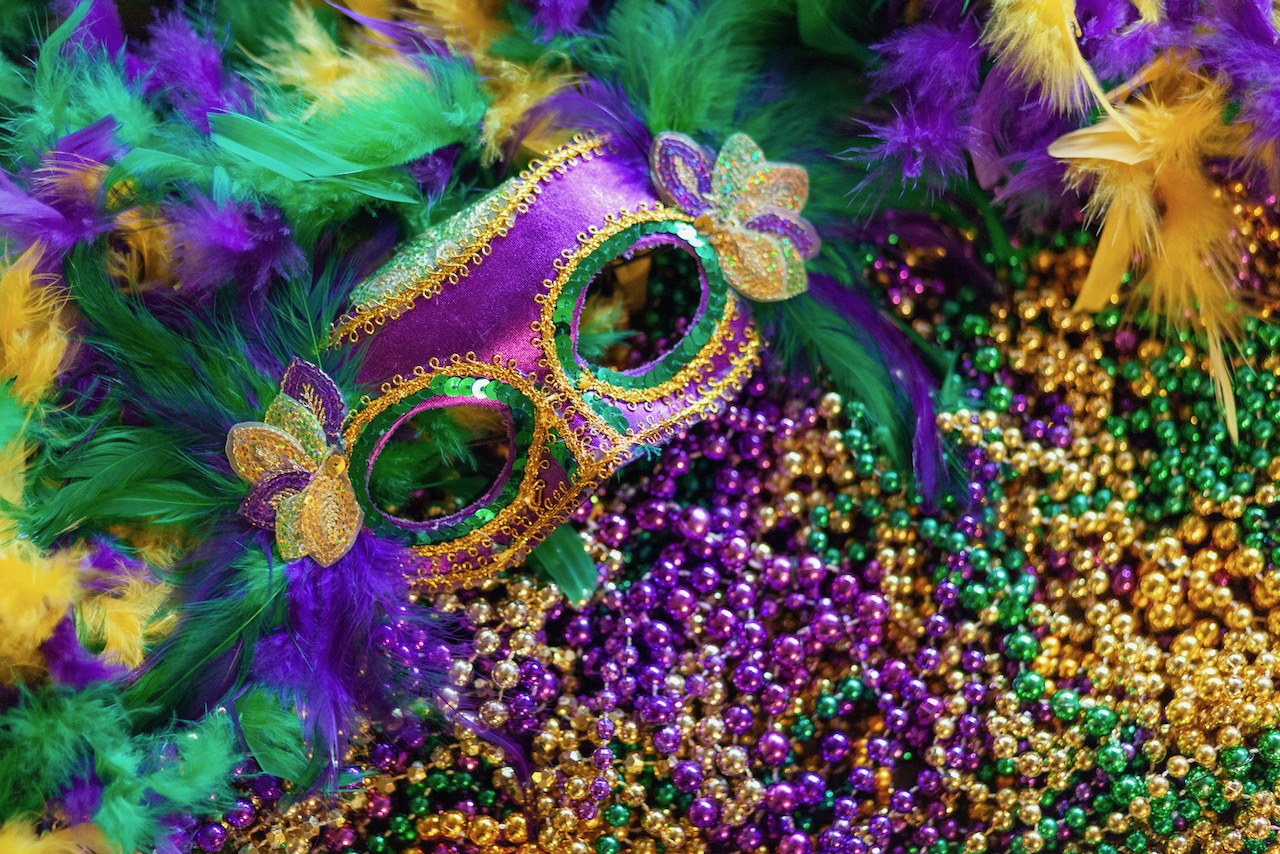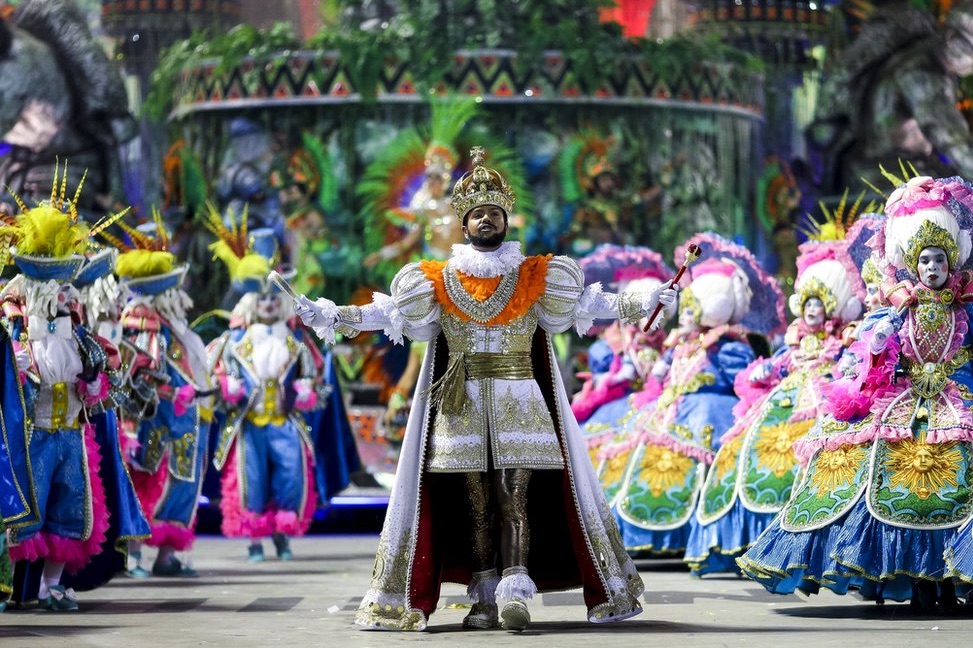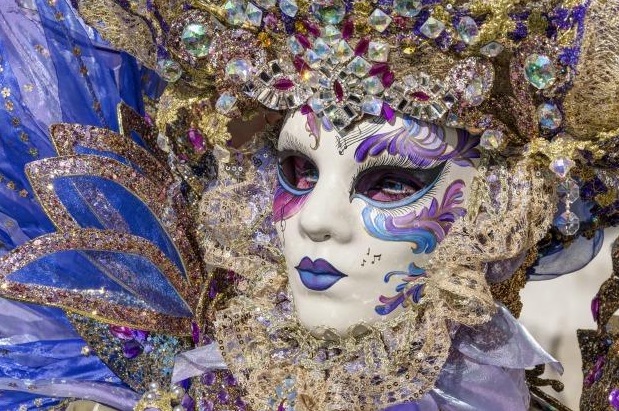
Virtual CARNIVAL & MARDI GRAS FESTIVITIES AROUND THE WORLD
The 2021 celebrations for Carnival and Mardi Gras, by Associates of the American Foreign Service Worldwide (AAFSW) with participation of Embassies of Brazil & Trinidad Tobago plus Venice & New Orleans. All welcome.
-
Virtual Event:
CARNIVAL and MARDI GRAS FESTIVITIES AROUND THE WORLD
AAFSW Virtual Webinar via Zoom
Tuesday, February 16, 2021
- The 2021 celebrations for Carnival and Mardi Gras are fast approaching, and we are all longing to get outside and enjoy these spectacular festivities full of music and dance!
- This year, the Associates of the American Foreign Service Worldwide (AAFSW) with the participation of the
Embassies of Brazil and Trinidad Tobago as well as Venice and New Orleans is happy to invite Welcome to Washington and all our international friends at the AAFSW Program entitled: “Carnival and Mardi Gras Festivities Around the World” highlighting the season’s musical and dancing traditions of Rio de Janeiro, Brazil as of Trinidad and Tobago; Venice, Italy; and New Orleans, Louisiana; join AAFSW for this amazing virtual presentation webinar for a fun journey around the world showcasing the best traditions of Carnival and Mardi Gras. - The AAFSW Webinar Festivities will start virtually at 11:00 am on the day of Mardi Gras, which this year is celebrated on Tuesday, February 16, 2021. Don’t forget to wear your favorite carnival mask and share in the joy!
 The Carnival of Brazil (Carnaval do Brasil) is an annual Brazilian festival held between the Friday afternoon before Ash Wednesday at noon, which marks the beginning of Lent, the forty-day period before Easter. During Lent, Roman Catholics and some other Christians traditionally abstained from the consumption of meat and poultry, hence the term “carnival”, from carnelevare, “to remove meat.”
The Carnival of Brazil (Carnaval do Brasil) is an annual Brazilian festival held between the Friday afternoon before Ash Wednesday at noon, which marks the beginning of Lent, the forty-day period before Easter. During Lent, Roman Catholics and some other Christians traditionally abstained from the consumption of meat and poultry, hence the term “carnival”, from carnelevare, “to remove meat.”- Rhythm, participation, and costumes vary from one region of Brazil to another. In the southeastern cities of Rio de Janeiro, São Paulo, and Vitória, huge organized parades are led by samba schools. Those official parades are meant to be watched by the public, while minor parades (blocos) allowing public participation can be found in other cities, like Belo Horizonte.
- The typical genres of music of Brazilian carnival are: the samba-enredo, the samba de bloco, the samba de embalo, the marchinha, frevo, maracatu, samba-reggae, pagode and axé music; all of which are linked back to Afro-Brazilian culture.
- Carnival is the most popular holiday in Brazil and has become an event of huge proportions. Except for industrial production, retail establishments such as malls, and carnival-related businesses, the country unifies completely for almost a week and festivities are intense, day and night, mainly in coastal cities. Rio de Janeiro’s carnival alone draws 4.9 million people, with 400,000 being foreigners.
- This cultural manifestation is generally an extension of Afro-Brazilian culture, though could also be historically traced to the Portuguese Age of Discoveries when their caravels passed regularly through Madeira, a territory which already celebrated emphatically its carnival season, and where they were loaded with goods but also people and their ludic and cultural expressions.
- The Brazilian Carnival Parades were first broadcast in the late 1960s on television on Rede Globo, which brought the Rio celebrations live, bringing the celebrations to more people all over the nation. By the 1970s, color broadcasting and satellite transmissions made the broadcasts to be beamed to other parts of the nation in real time, by then featuring the top schools under the Liga Independente das Escolas de Samba do Rio de Janeiro.

- The Carnival of Venice is an annual festival, which ends with the Christian celebration of Lent, forty days before Easter, on Martedì Grasso or Mardi Gras, the day before Ash Wednesday. The festival is world-famous for its elaborate masks.
- According to legend, the Carnival of Venice started following the military victory of the Venetian Republic over the Patriarch of Aquileia, Ulrico di Treven in the year 1162. In honor of this victory, the people started to dance and gather in San Marco Square. Apparently, this festival started in that period and became official in the Renaissance. In the seventeenth century, the baroque carnival was a way to save the prestigious image of Venice in the world. It was very famous during the eighteenth century. It encouraged license and pleasure, but it was also used to protect Venetians from present and future anguish. However, under the rule of the Holy Roman Emperor and later Emperor of Austria, Francis II, the festival was outlawed entirely in 1797 and the use of masks became strictly forbidden. It reappeared gradually in the nineteenth century, but only for short periods and above all for private feasts, where it became an occasion for artistic creations.
- After a long absence, the Carnival returned in 1979. The Italian government decided to bring back the history and culture of Venice and sought to use the traditional Carnival as the centerpiece of its efforts. The redevelopment of the masks began as the pursuit of some Venetian college students for the tourist trade. Since then, approximately 3 million visitors come to Venice every year for the Carnival. One of the most important events is the contest for la maschera più bella (“the most beautiful mask”) which is judged by a panel of international costume and fashion designers. There is less evidence explaining the motive for the earliest mask being worn in Venice. One scholar argues that covering the face in public was a uniquely Venetian response to one of the most rigid class hierarchies in European history. During Carnival, the sumptuary laws were suspended, and people could dress as they liked, instead of according to the rules that were set down in law for their profession and social class. Some of the most famous masks include: the Bauta, the Colombina, the Plague Doctor, the mute servant, the ghost, the harlequin, etc.
-
 Mardi Gras has been celebrated in New Orleans since the explorer Iberville first set foot here on Mardi Gras Day 1699. Join us to discover by our presenter why Mardi Gras is so much more special as you will understand what you’re celebrating and what each tradition means to the generations of parade-goers who have stood on parade routes before you. There is a story and a purpose behind everything you’ll experience during Carnival Time – from the king cake you’ll eat to the flambeaux who light the parades at night. You will find out that some of the most glittering spectacles of Mardi Gras happen behind closed doors at grand balls thrown by krewes for their members and lucky guests. You will discover a brief history of the unique and historically rooted culture of Mardi Gras Indians in New Orleans and why the Twelfth Night marks the beginning of Carnival season, Mardi Gras, in New Orleans. Our presenter will enlighten you about the best events to attend from parades to masquerade balls and explain to you all about the lighting up of various parade routes, keeping the eager spectators warm while carrying out a beloved Mardi Gras tradition by the Flambeaux carriers.
Mardi Gras has been celebrated in New Orleans since the explorer Iberville first set foot here on Mardi Gras Day 1699. Join us to discover by our presenter why Mardi Gras is so much more special as you will understand what you’re celebrating and what each tradition means to the generations of parade-goers who have stood on parade routes before you. There is a story and a purpose behind everything you’ll experience during Carnival Time – from the king cake you’ll eat to the flambeaux who light the parades at night. You will find out that some of the most glittering spectacles of Mardi Gras happen behind closed doors at grand balls thrown by krewes for their members and lucky guests. You will discover a brief history of the unique and historically rooted culture of Mardi Gras Indians in New Orleans and why the Twelfth Night marks the beginning of Carnival season, Mardi Gras, in New Orleans. Our presenter will enlighten you about the best events to attend from parades to masquerade balls and explain to you all about the lighting up of various parade routes, keeping the eager spectators warm while carrying out a beloved Mardi Gras tradition by the Flambeaux carriers.

- The Trinidad and Tobago Carnival is an annual event held on the Monday and Tuesday before Ash Wednesday in Trinidad and Tobago. The event is well known for participants’ colorful costumes and exuberant celebrations. There are numerous cultural events such as “band launch fetes” running in the lead up to the street parade on Carnival Monday and Tuesday. It is said that if the islanders are not celebrating it, then they are preparing for it, while reminiscing about the past year’s festival. Traditionally, the festival is associated with calypso music, with its origins formulated in the midst of hardship for enslaved West and Central Africans; however, recently Soca music has replaced calypso as the most celebrated type of music. Costumes (sometimes called “mas”), stick-fighting and limbo competitions are also important components of the festival.
If you would like to join this Zoom Webinar, please RSVP to office@aafsw.org and provide your email address.
I look forward to seeing you
Warm regards,
- Sheila Switzer,
- AAFSW Program Chair
- Associates of the American Foreign Service Worldwide

You may read the bios of the presenters below:

- Rafael Beltrami, Brazil, joined the Brazilian Foreign Service in 2005 as a Chancery Officer. In Brazil, he works with cooperation for Development and at the Press Office with social media. Abroad, he was a vice-consul in Canberra, Australia and New Delhi, India, before his current assignment as an attaché at the Embassy of Brazil in Washington.

- Anna Lane, Venice: I was born in Palermo Italy and I moved in the USA in 1980 after marrying an American diplomat. In 1997 we were assigned to Mexico City where I had the opportunity to work for the Department of State as a consular specialist. I worked at the US Embassy in Mexico City, London and Beijing. I am fluent in Spanish and Italian; I speak some German and Chinese Mandarin. After three years in Beijing, I moved to the Washington DC area where I worked for the Family Liaison Office as liaison officer to the Department of Homeland Security. I retired in 2015 and since then I have been teaching yoga and studying oriental philosophy. I live between Fairfax VA and Palermo Sicily.
- Kelly Schulz, New Orleans: Kelly Shulz is the Senior Vice President of Communications for New Orleans & Company, the official destination marketing organization for New Orleans tourism industry. Kelly is a New Orleans native who returned to the city following Hurricane Katrina in 2006 and again following the pandemic in 2020 to help restore New Orleans’ economic engine of tourism. She has more than 20 years of experience as a public relations executive.

- Joan Brammer is The Attaché Public Affairs and Culture at The Embassy of The Republic of Trinidad and Tobago in Washington DC. In this role she leads the charge in cultural promotion, diaspora engagement and passionately works to assist in addressing any issues brought to her by Trinbagonians living in the United States.
- Service to Country has always held a special place in Joan’s life, beginning with her 30 plus year career as a Flight Attendant with the National Airline (BWIA) and the ten years she served as the Manager of Protocol at The Piarco International Airport.
- Joan is passionate about spreading the culture of Trinidad and Tobago around the world and loves the national instrument, the steel pan which she has been playing for many years.
- She is also a fierce advocate for the youth. Since coming to DC she has worked with students from under-represented areas, through the ……program with the embassy.
- Married for 43years she is the proud mother of two children.
- Joan tries to live by her mantra. “Kindness Rules The World “
When: Tuesday, February 16, 2021 (at 11:00 am)
Where: Online: Zoom
***
Voluntary contribution to AAFSW: CLICK HERE
- REGISTER for THIS EVENT (Free for All!)
Click here to buy tickets!!!
(Or Register FREE, whether or not you're a Member)(Confirming email will contain the URL for the Zoom session)
